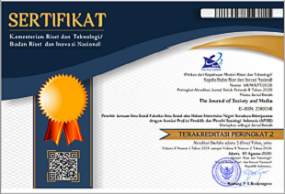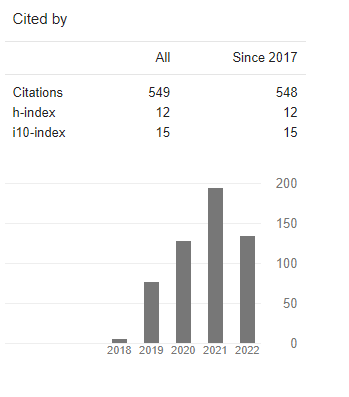Post a Picture Privat Area: an Adolescent Cyber Crime and Cyber Deviance Analysis
DOI:
https://doi.org/10.26740/jsm.v6n2.p591-609Keywords:
adolescent, cyber crime, cyber deviance, post a picture, relationship pattern.Abstract
The development of technology and social media today is like a double edged knife. On the other hand, it provides many conveniences and innovations, but on the other hand it also has a negative impact, especially for users who are adolescent. The content and access presented in social media can actually trigger the birth of a private Post a Picture (PAP) area. In addition, at the age of adolescence, the development of sexuality, both physically and sexually, is taking place, coupled with the existence of special relationships between adolescents, making the barrier between private and public spaces a common thing. Through access to various chat media applications, this is the beginning of the phenomenon of post a picture photos or videos in this private area. There are two motives for adolescent to post a picture in a private area, namely the motive for sharing voluntarily and the motive for coercion. This phenomenon is a form of cyber deviance because it leads to virtual harassment in the digital space. This study uses a quantitative research approach with survey methods and uses explanatory analysis techniques. Therefore, this study aims to show the extent to which adolescent understand cyber crime and cyber deviance through the phenomenon of Post a Picture (PAP) in the private area. The results of this study indicate that what causes this phenomenon to occur is because there are several contributing factors including a lack of understanding of values and norms, as well as religious observance. In addition, this study also shows that there is a adolescents’s view that private PAP is a deviant act but is mostly done by them. This article is expected to be a stimulus and awareness to the public, especially adolescent, that this phenomenon requires holistic reinforcement so that this phenomenon can be handled optimally.
References
BPS. 2018. Statistik Telekomunikasi Indonesia.
Erwan Agus Purwanto, Dyah Ratih Sulistyastuti. 2007 .Metode Penelitian Kuantitatif : Untuk Administrasi Publik Dan Masalah-Masalah Sosial. Gava Media.
Santrock, John W. 2003. Adolescence. Perkembangan Remaja. 6th ed. Erlangga.
Downloads
Published
How to Cite
Issue
Section
License
Copyright (c) 2022 The Journal of Society and Media

This work is licensed under a Creative Commons Attribution 4.0 International License.
 Abstract views: 461
,
Abstract views: 461
, PDF Downloads: 483
PDF Downloads: 483












